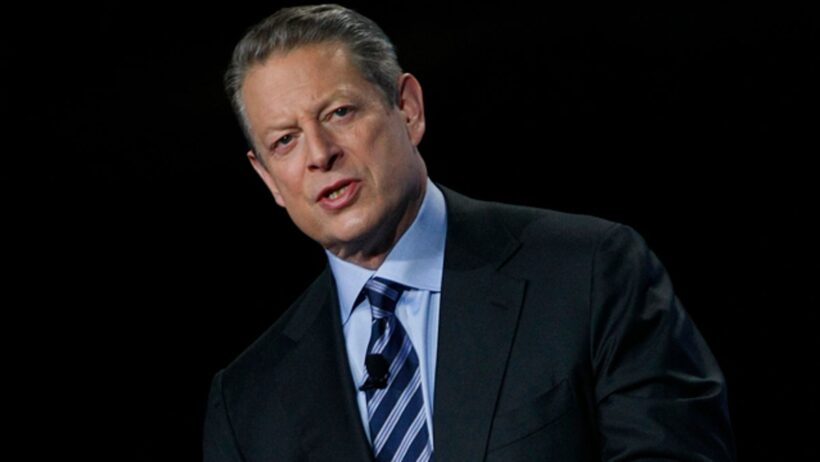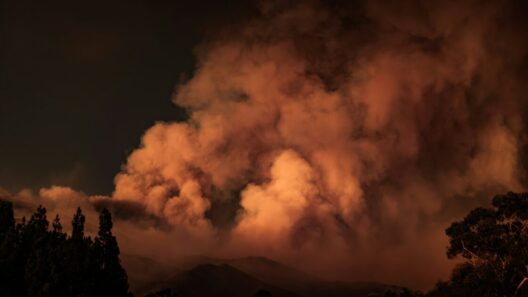Al Gore, an American politician, environmentalist, and advocate for climate awareness, has become an emblematic figure in the ongoing discourse surrounding global warming. His passionate advocacy and relentless campaigns have particularly focused on the dangers and ramifications of anthropogenic climate change. However, Gore’s methods and rhetoric have drawn criticism, often branding him as a “climate shock jock,” a term that reflects the skepticism and division within public and political arenas. This article aims to unpack the multifaceted controversy surrounding Al Gore and his contributions to the dialogue on global warming.
Gore’s journey as an environmental advocate began in earnest during his tenure as a U.S. Senator from Tennessee, culminating in his role as the Vice President under President Bill Clinton. It was during this pivotal phase that he developed an acute awareness of climate issues. He significantly raised public consciousness through his book, “Earth in the Balance,” published in 1992, where he offered a prescient view on ecological crises and policy reforms. His arguments were grounded in scientific data, though some detractors argue that his interpretation of this data sometimes veered toward alarmism.
The release of the documentary “An Inconvenient Truth” in 2006 marked a watershed moment in public discourse about climate change. The film melded Gore’s personal narrative with stark visual representations of environmental degradation, effectively making the issue accessible to a broad audience. Through this work, he aimed to galvanize a collective response to what he termed a “planetary emergency.” The impact of the film was substantial, reigniting debates over climate change and propelling environmental issues to the forefront of political conversations.
However, this visibility came at a cost. Critics, including many from conservative circles, decried Gore’s approach as unnecessarily sensational and fear-inducing. Some commentators have referred to him as a “climate shock jock,” implying that his style resembles sensationalist media that prioritizes dramatic presentation over measured discourse. This branding raises pertinent questions: Does alarmism undermine the credibility of climate science, or does it serve as a necessary catalyst for action in the face of potential catastrophe?
Scrutinizing Gore’s alarmist characterization reveals nuances often overlooked in the public debate. On one hand, alarmism can provoke public action and awareness, nurturing a sense of urgency that is essential for mobilizing resources and public opinion towards combating climate change. On the other hand, there is legitimate concern that overstating potential crises may lead to public apathy or backlash against climate policies. This dichotomy complicates the effectiveness of climate communication and reveals the fine line that advocates like Gore must tread.
In his advocacy, Gore emphasizes the overwhelming scientific consensus on climate change, drawing from extensive research conducted by organizations like the Intergovernmental Panel on Climate Change (IPCC). He tirelessly argues that the myriad impacts of global warming, including extreme weather events, rising sea levels, and biodiversity loss, are irrefutable and urgent. The statistical evidence he presents often includes projections of future scenarios that often rely heavily on models that some critics claim can be overly pessimistic.
Moreover, the opposing perspectives regarding Gore’s assertions occasionally cloud the scientific discussions necessary for effective policymaking. Critics argue that while the overarching trend of warming is supported by empirical data, the specific forecasts about the timing and severity of climate impacts are fraught with uncertainties. Hence, some skeptics believe that Gore’s dire predictions detract from more temperate solutions that could be implemented sooner rather than later.
This contention leads to an exploration of the psychological effects of climate advocacy. Attention-grabbing strategies can be double-edged swords: they may generate initial interest and urgency, but prolonged exposure to fear-based discourse can result in disengagement. Such phenomena, termed “eco-anxiety,” pose further challenges for activists seeking to sustain public engagement over extended periods. In this context, Gore’s approach inspires critical examination of how environmental advocacy can balance urgent messaging with fostering sustainable interest.
Despite controversies surrounding his tactics, Gore’s advocacy has undeniably catalyzed numerous initiatives aimed at climate solutions. As a co-founder of Generation Investment Management, he has pushed for sustainable investment practices that align with environmental goals, steering capital towards sustainable technologies and practices. By championing green technology and renewable energy sources, he has advocated for a shift towards a more sustainable economic paradigm, thereby embodying the change he wishes to see.
Moreover, Gore’s leadership extends beyond national borders. He has played a crucial role in fostering international collaborations on climate change, ensuring that the discourse transcends political affiliations and geographic boundaries. His involvement in global forums, such as the United Nations Climate Change Conferences, illustrates his commitment to uniting various stakeholders in the fight against climate change. Such efforts are crucial, as climate change cannot be mitigated by isolated national measures alone; it requires a concerted effort amongst various nations and communities.
As we continue to explore the complexities of climate advocacy fostered by figures like Al Gore, it is paramount to understand the interface of science, policy, and public perception. Gore remains a polarizing figure, embodying the challenges of climate communication in an era defined by misinformation and skepticism. However, by examining the spectrum of responses to his work, we glean insights into how climate activists can effectively mobilize communities and drive systemic change.
Ultimately, the controversy surrounding Al Gore’s methods begs greater reflection on the implications of climate communication strategies. In an age marked by unprecedented environmental challenges, the discourse must pivot towards fostering informed engagement, encouraging critical discussions, and building consensus on actionable, science-based policies. By navigating the delicate balance between urgency and empowerment, advocates can inspire a resilience that transcends fear and cultivates sustained commitment to combatting climate change. The shifting narratives surrounding Gore serve as a compelling reminder that in the pursuit of ecological stewardship, every voice matters, and every strategy counts.








